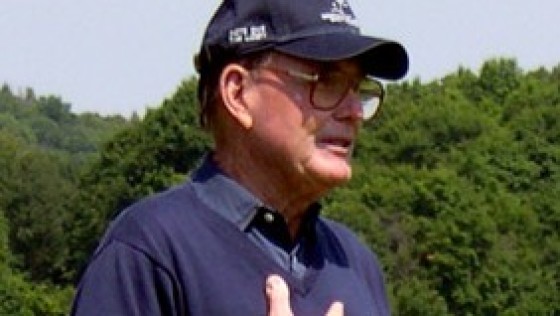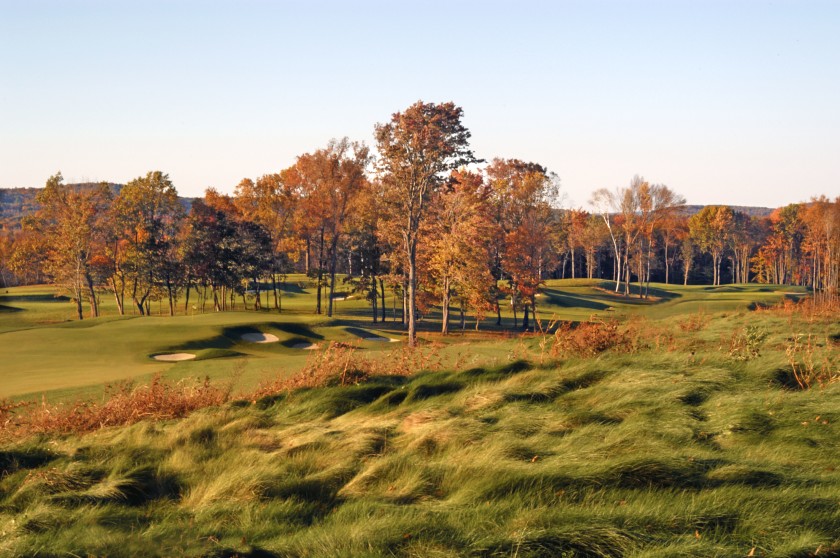
HARTFORD, Conn. – Pete Dye, one of the most famous and important golf course architects in history, died Thursday at 94. I was fortunate to have several one-on-one chats with Dye while he was renovating Edgewood Golf Club in Cromwell that became the TPC of Connecticut, replacing Wethersfield Country Club as the Greater Hartford Open venue in 1984, and then TPC River Highlands in 1989.
I fondly recall Dye taking a napkin during lunch one day, drawing how he was building a new green on the first hole and then taking me to the site, getting on his knees and moving around different areas of dirt. I smiled and said, “Pete, I don’t think Jack Nicklaus does this.” He returned the smile and continued his work, which cost the Greater Hartford Jaycees a minimal amount largely because he was friends with Drew and Peter Pierson, who owned Edgewood GC.
Dye, a 2008 inductee into the World Golf Hall of Fame, designed dozens of courses, many of them done in partnership with his wife of 68 years, Alice. Some of Dye’s courses are among the most well-known in the world, including Harbor Town Golf Links on Hilton Head Island, S.C., site of an annual PGA Tour event since 1969; Whistling Straits in Haven, Wis., a three-time PGA Championship venue; and The Players Stadium Course at TPC Sawgrass in Ponte Vedra, Fla., known for its par-3 17th hole with an island green.

“Pete’s influence is far-reaching, leaving a global imprint on both the amateur and professional games,” said PGA Tour commissioner Jay Monahan, a Trinity College graduate and the first tournament director of the Deutsche Bank Championship at TPC Boston in Norton, Mass. “He designed some of the best-known golf courses in the world, though none more recognizable than The Players Stadium Course. It was there that Pete masterfully brought commissioner Deane Beman’s revolutionary stadium golf concept to life, melding Deane’s vision with a brilliantly designed course that is celebrated annually as one of the game’s greatest strategic courses during The Players Championship.
“Pete, though, was always quick to credit his beloved wife, Alice, with his success, including the concept for his most famous hole, the 17th island green at TPC Sawgrass. Together, Pete and Alice made a formidable team in golf and life, and with sons Perry and P.B., themselves successful course architects, are recognized as one of the most accomplished families in golf.”
Dye incorporated the “stadium style” on the 440-yard, par-4 18th hole at TPC Connecticut, using an amphitheater that seated 20,000 people the final 150-200 yards.
“I don’t know if there’s another hole in the world that can handle so many people,” Dye said.
Dye also used his famous – or infamous to some – railroad ties on the 15th, 16th and 17th holes built around a 90-acre pond. They helped produce one of the greatest shots in the history of the PGA Tour’s annual stop in Connecticut since 1952. In the 1988 Canon Sammy Davis Jr.-Greater Hartford Open, Dave Barr backhanded a shot off the railroad ties fronting the 17th green with an upside-down wedge on the second playoff hole. The ball rolled through the rough and fringe and stopped 10 feet from the hole, but Barr never got a chance to salvage a miraculous par because Mark Brooks made a 12-foot birdie putt for his first of seven PGA Tour victories, including the 1996 PGA Championship that he also won in a playoff with 2009 Travelers Championship winner Kenny Perry. Joey Sindelar had been eliminated on the first extra hole.
In 1989, the railroad ties were removed during more remodeling to the course by Bobby Weed in consultation with PGA Tour players Roger Maltbie and 1980 Sammy Davis Jr.-GHO champion Howard Twitty, but they’ve never been forgotten thanks to the unique style of Pete Dye.











Leave a Reply